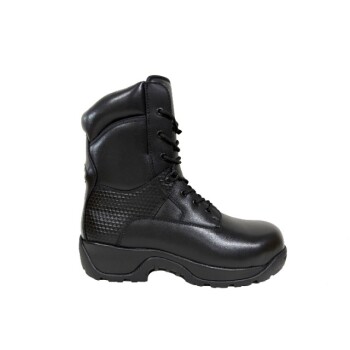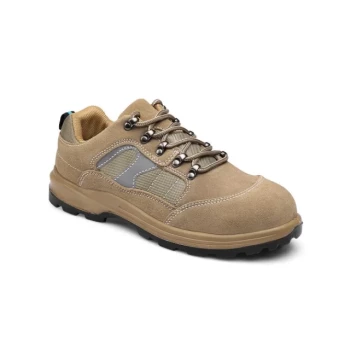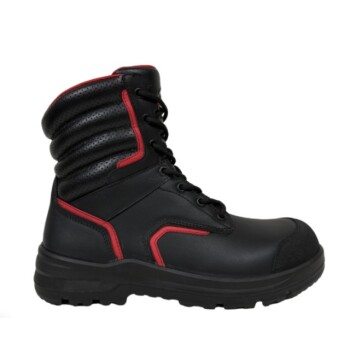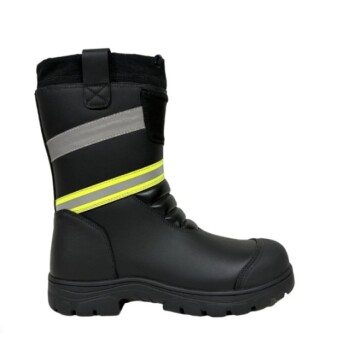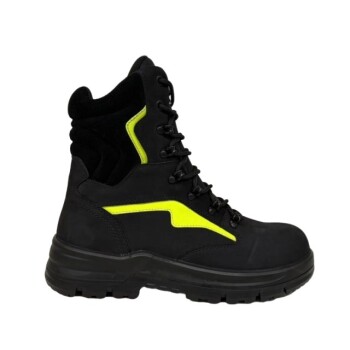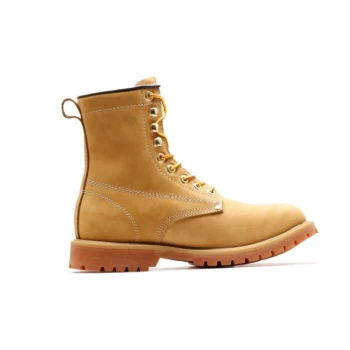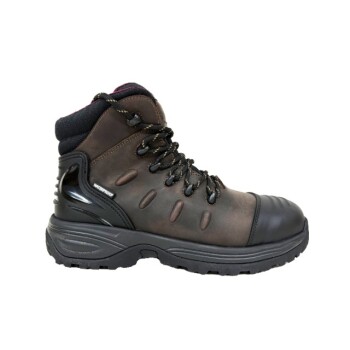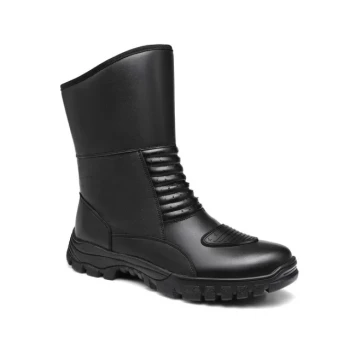Crucially, OSHA does not explicitly mandate "steel toe boots" by name. Instead, the Occupational Safety and Health Administration (OSHA) requires employers to ensure workers have protective footwear that guards against specific workplace hazards. These standards are performance-based, meaning the footwear must protect against dangers like falling objects, punctures, or electrical risks. Steel toe boots are simply one of the most common and effective solutions for meeting these requirements.
The core principle of OSHA's footwear standard is not about specifying a particular material like steel, but about conducting a hazard assessment. Employers must provide footwear that effectively protects against the identified risks of the specific job, whether that solution is a steel toe boot, a composite toe boot, or another form of protective shoe.
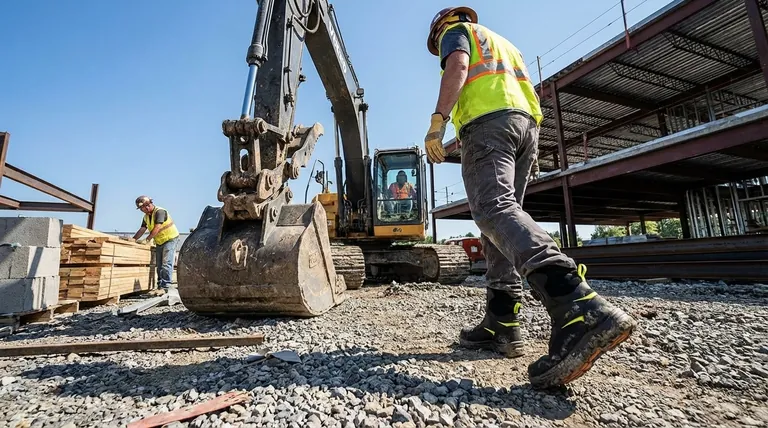
The Foundation: OSHA's Hazard-Based Standard
OSHA’s rules on protective footwear fall under its broader standards for Personal Protective Equipment (PPE). The entire philosophy is built on identifying and mitigating risk, not on prescribing a single product.
The Hazard Assessment Comes First
The primary responsibility for an employer is to assess the workplace to determine if foot hazards are present. This includes risks from falling or rolling objects, sharp materials that could puncture a sole, and electrical dangers.
Protective Footwear as a PPE Category
Once hazards are identified, the employer must select and provide appropriate protective footwear at no cost to the employee. This footwear must meet specific performance criteria relevant to the identified dangers.
Key Hazards Addressed by Footwear
OSHA requires that safety footwear provides adequate protection against significant impact and compression from falling objects or heavy equipment. It also mandates puncture-resistant and slip-resistant properties for many environments, especially construction sites.
Why Steel Toe Boots Are a Common Solution
While not mandated by name, steel toe boots are widely used because they reliably and cost-effectively meet the most common and severe workplace foot-hazard requirements.
Unmatched Impact and Compression Resistance
The reinforced steel toe cap provides maximum protection against heavy falling objects and the crushing force of industrial equipment, making it a staple in construction, manufacturing, and logistics.
Superior Puncture and Cutting Protection
The inherent strength of steel, often combined with a steel plate in the midsole, offers robust protection from nails, scrap metal, and other sharp materials on a job site.
Essential Slip and Fall Prevention
Quality steel toe boots are designed with non-slip soles. This feature is critical for preventing slips, trips, and falls, which are among the most common causes of workplace injuries.
Protection from Secondary Hazards
Many steel toe boots are also engineered to be water-resistant, protect against electrical hazards (EH-rated), and provide insulation from extreme weather, adding layers of safety.
Understanding the Trade-offs of Steel Toes
To make an informed decision, you must recognize that steel toe boots have specific characteristics that may not be ideal for every situation.
Weight and Comfort
Steel is heavier than modern alternatives like composite materials. Over a long shift, the added weight can contribute to fatigue.
Temperature Conduction
Because steel is a metal, it conducts temperature. In very cold environments, the toe box can become cold, and in high-heat environments, it can become warm.
Interference with Equipment
The metal component will set off metal detectors, which can be a daily issue in secure facilities. They are also unsuitable for work around strong magnetic surfaces.
Cost-Effectiveness
Despite their drawbacks, steel toe boots are often less expensive than composite toe boots that offer a similar level of impact protection, making them a popular and accessible choice.
Making the Right Choice for Your Role
Your final decision should be based on a clear understanding of your specific work environment and its unique hazards.
- If your primary focus is heavy industry or construction: A steel toe boot is often the most reliable and cost-effective choice for protection against severe impact and compression hazards.
- If your primary focus is working around electricity or in extreme temperatures: You must look for boots with a specific Electrical Hazard (EH) rating and may want to consider composite toe alternatives that don't conduct temperature.
- If your primary focus is convenience in a secure facility: A composite toe boot is a more practical solution to avoid daily issues with metal detectors while still providing necessary impact protection.
Ultimately, compliance and safety are achieved by matching the boot's protective capabilities to the real-world risks of your job.
Summary Table:
| Key OSHA Principle | Common Solution | Key Takeaway |
|---|---|---|
| Performance-based standard (not a material mandate) | Steel toe boots | The employer must provide footwear that protects against identified hazards. |
| Requires a hazard assessment first | Chosen for impact/compression resistance | The boot's protection must match the job's specific risks. |
| Footwear must guard against falling objects, punctures, etc. | Effective for puncture and slip resistance | Steel toes are a common, cost-effective way to meet requirements. |
Ensure your workforce is equipped with the right protective footwear.
As a large-scale manufacturer, 3515 produces a comprehensive range of compliant safety boots and shoes for distributors, brand owners, and bulk clients. Our production capabilities encompass all types of footwear designed to meet OSHA standards, including steel toe boots that offer superior protection against impact, compression, and punctures.
We help you mitigate workplace risks and ensure compliance by providing durable, cost-effective safety solutions tailored to your specific industry hazards.
Contact 3515 today to discuss your protective footwear needs and request a quote.
Visual Guide
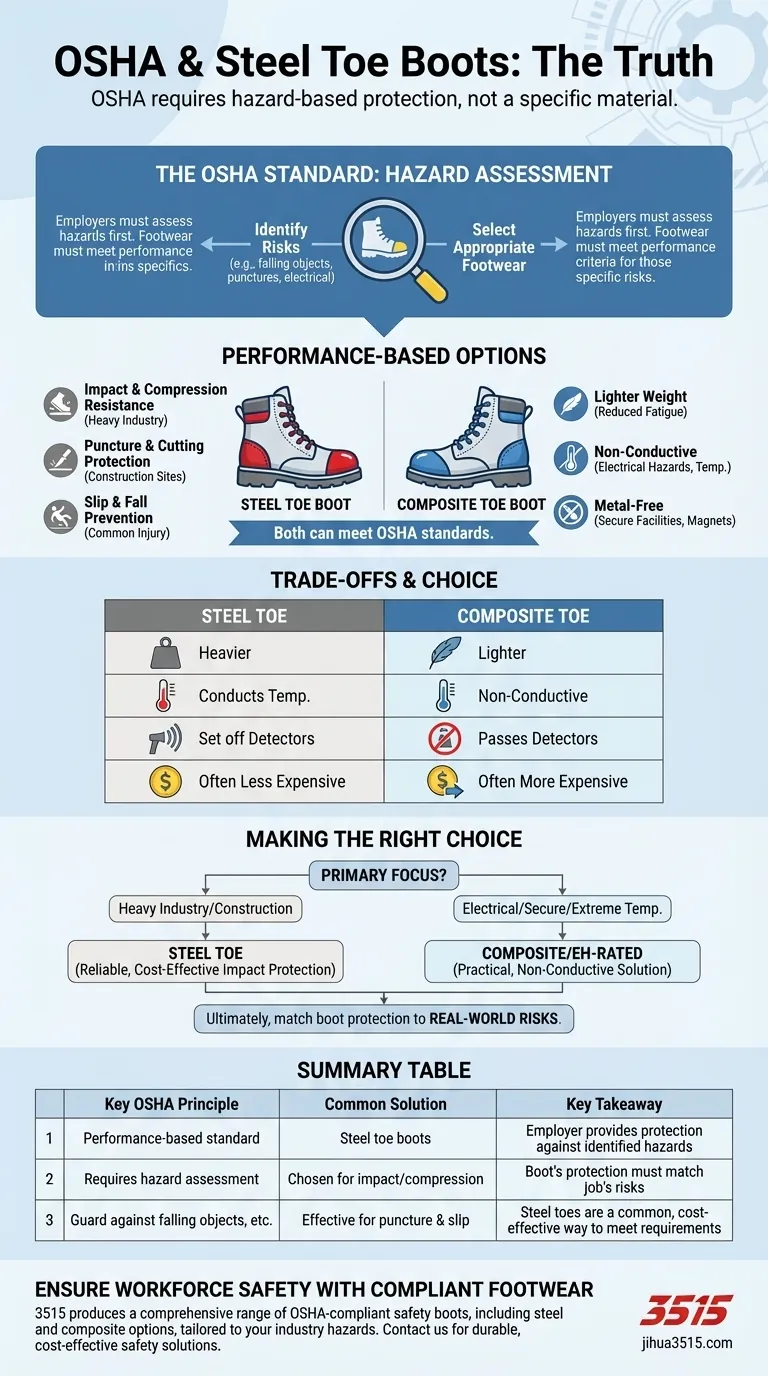
Related Products
- Premium High-Cut Waterproof Safety Boots Manufacturing & Wholesale Solutions
- Heavy-Duty Waterproof Nubuck Safety Boots Safety Shoes for Bulk Supply
- Premium Wholesale Wheat Nubuck Safety Boot with Rapid Lacing System
- Premium Grain Leather Safety Boots for Bulk Supply
- Wholesale Mesh Steel Toe Safety Shoes with Dial Closure Factory Production
People Also Ask
- What type of safety boots should a general construction worker wear? Choose the Right Boot for Maximum Protection
- What is the general recommendation for both steel and composite safety footwear after a significant impact? Replace Immediately for Safety.
- What materials are used for impact-resistant toes? Steel, Aluminum, or Composite?
- What organization provides safety standards for work boots? Meet ASTM International, the Key to OSHA Compliance
- What are the different types of safety toe boots available? Choose the Right Protection for Your Job



